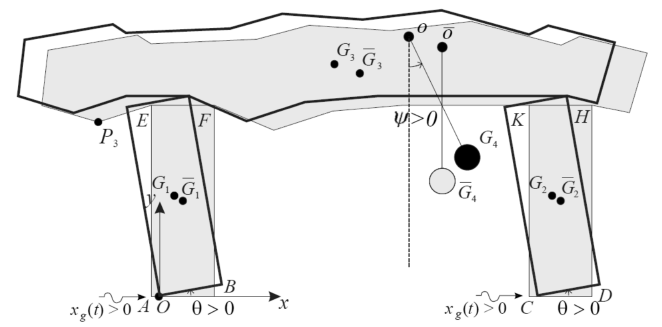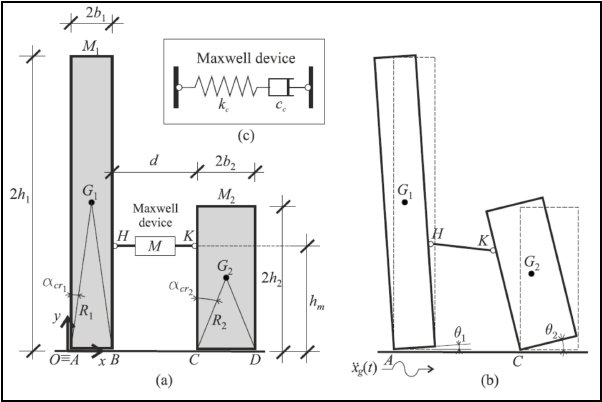D.I.C.E.A.A. - Dipartimento di Ingegneria Civile, Edile-Architettura e Ambientale
The trilith consists of two vertical elements (columns) supporting a horizontal element (lintel). The understanding of the dynamic
behaviour of triliths is an important step towards their preservation and starts with the knowledge of the dynamics of rigid blocks.
A passive method based on a dynamic mass absorber is used to protect a trilith from overturning. The protection system is modelled
as a pendulum, hinged on the lintel, with the mass lumped at the end. The equations of rocking motion, uplift and the impact conditions
are obtained for the coupled system trilith-mass absorber. An extensive parametric analysis is performed with the aim to compare the
behaviour of the system with and without the pendulum, under impulsive one-sine (or one-cosine) base excitations. In order to point
out the effectiveness of the protection system, overturning spectra, providing the amplitude of the excitation versus its frequency,
are obtained. The pendulum mass absorber results effective in avoiding overturning in specific ranges of the frequency of the excitation.
However, outside these ranges the mass absorber never compromises the safety of the trilith.
The protection against seismic hazards for rigid block-like structures, commonly modeled as rigid blocks, is often achieved by coupling
such structures with external protection devices. The most commonly used protection devices include dynamic mass absorbers, oscillating
masses, base isolation systems, and hysteretic mass damper inerters. Additionally, several papers have studied the dynamic and seismic
response of rigid blocks connected in series, with most of them focusing on the stacked rigid block system, where the blocks are placed
one on top of the other. This paper investigates the seismic behavior of a system consisting of two rigid blocks connected in series
through a linear visco-elastic Maxwell device. The aim is to understand the possibility of improving the seismic response of a rocking
structure (modeled by one of the two rigid blocks) by connecting it with a rocking protection device (modeled by the additional rigid
block). Each rigid block can exhibit three different types of motion: full contact, rocking motion around the left base vertex, and
rocking motion around the right base vertex. Consequently, during the motion of the coupled system, nine different combinations can
occur, each of which is described through a specific set of equations of motion. A parametric analysis is performed with the aim of
investigating how the characteristics of the additional rigid block and connection device affect the seismic behavior of the main
rigid block (the one modeling the rocking structure). The assessment is carried out through a comparison between the displacements
of the coupled system and those of the stand-alone blocks. The results, organized in gain maps, show that there are several combinations
of the characteristics of the additional rigid block and connection device that lead to an improvement in the seismic behavior of
the main rigid block.


















